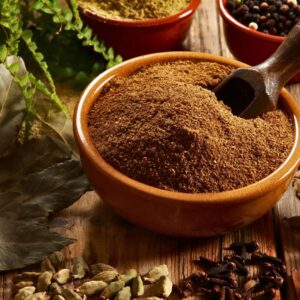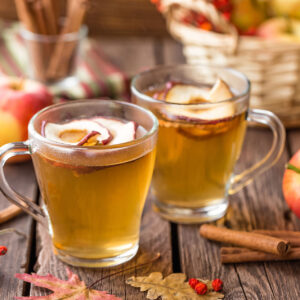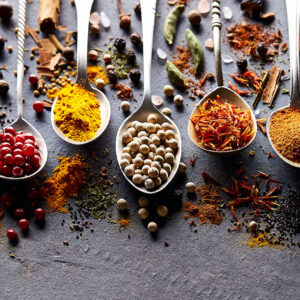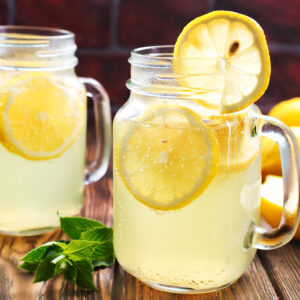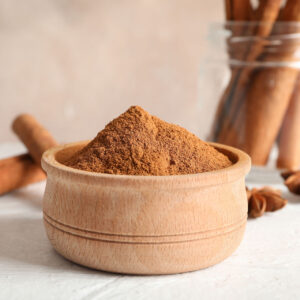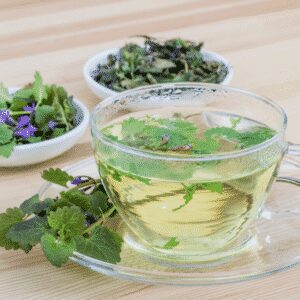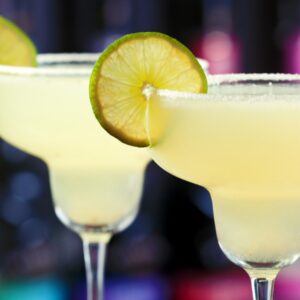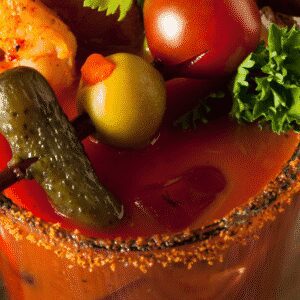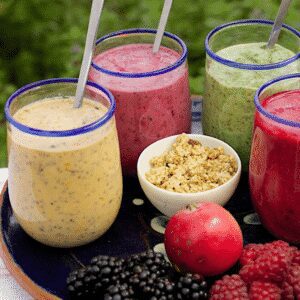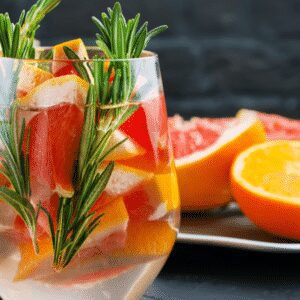The spices utilized in Indian Masala Chai were historically employed in medicine, in line with the Hindu approach to balance utilizing diet, herbs, and yogic breathing. Eventually, chefs discovered that these same spices greatly enhanced both sweet and savory dishes.
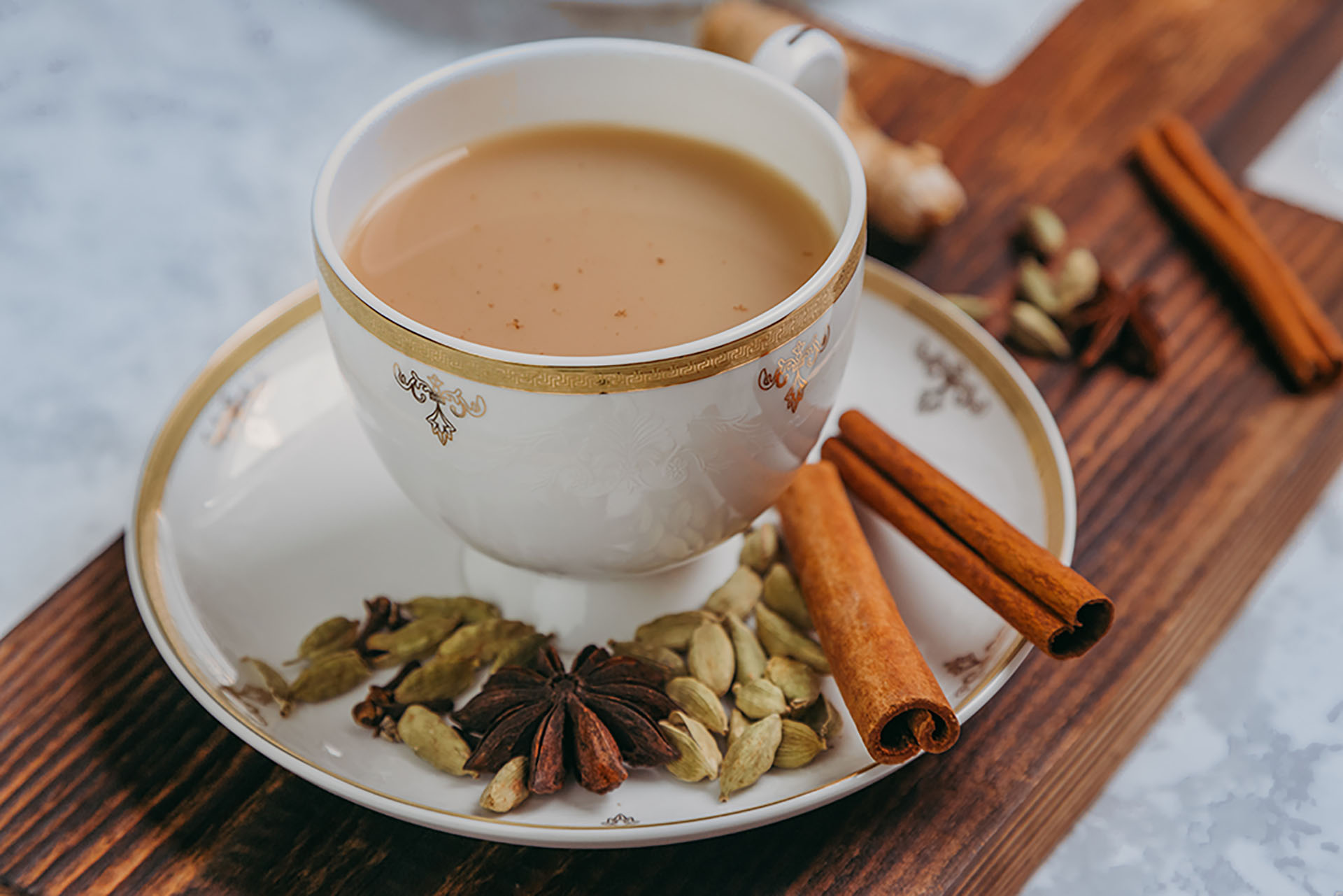
The spices utilized in Indian Masala Chai were historically employed in medicine, in line with the Hindu approach to balance utilizing diet, herbs, and yogic breathing. Eventually, chefs discovered that these same spices greatly enhanced both sweet and savory dishes.
For centuries, Indian-style cooking has incorporated a multilayered approach to spicing, beginning with toasting whole spices and concluding with the addition of crushed or powdered versions just before serving.
Therefore, it is no surprise that spices play a crucial role in the tale of Masala Chai. (Even though many of us refer to this beverage as chai tea, this is incorrect. In India, chai denotes tea. Thus masala chai refers to spiced tea, as opposed to chai tea, which translates to tea tea!)
Chai wallahs are tea servers or vendors, and you are likely to encounter numerous of these vendors carrying a load of clay cups and hot chai to sell anywhere, and everywhere individuals gather in India. The clay cups are inexpensive, used once, and thrown to the ground, where they break down into powdery clay once more. This exemplifies biodegradability at its finest!
What Goes Into Making a Classic Masala Chai?
Regardless of the recipe, Masala Chai comprises three components: tea, spices, and dairy. The tea and spices provide energy, while the dairy adds creaminess. When combined, this tea not only warms our bodies but also uplifts our spirits. It’s no wonder that Masala Chai is India’s national beverage!
Nowadays, numerous fans of India’s spiced tea enjoy experimenting with these three fundamental ingredients, first, the tea. While South African Honeybush or Rooibos and South American mates serve as perfect canvases for chai spices, Indian black teas or breakfast blends are the most prevalent base for Masala Chai. Though traditional black Assam and Nilgiri varieties produce fantastic chais, Sri Lankan black Ceylon teas are also excellent options.
Green teas, which are favored in Kashmir for spicy chais, are less common and tend to be gunpowder rather than delicate Japanese and Chinese vegetal types. Another possibility is greens produced from various Ceylon teas or Darjeeling, which create a completely different chai experience, less smooth or soft and less likely to be complemented by dairy but still intriguing with spices. Even delicate whites and deep rich pu-erh teas can be elevated to create flavorful chai recipes.
Creating Your Own Blend of Masala Garam
In Hindi, masala garam denotes a combination of spices. The recipes for masala chai are numerous, perhaps as diverse as the home and commercial chefs who make them, making creativity the king in this case.
Among the spices most commonly used in masala chai are cloves, fresh ginger, black peppercorns, cinnamon, and cardamom. Grind the spices from the whole ones and grate the fresh ginger, peeled or not. Begin with a pinch of each spice in the mix. Keep in mind that cardamom is the mildest of these spices, and the sharp tang of the others can quickly overpower it. Cinnamon, especially those from Sri Lanka or Vietnam, have a mild fragrance and taste, so feel free to add more if you love it! Allspice, as its name implies, is a spice that pre-mixes cinnamon, cloves, and pepper with a different fourth spice, nutmeg, making it an easy alternative to achieving a balance of these flavors. Consider both mace and nutmeg, two parts of the same spice. Nutmeg is the oval-shaped pit or fruit, and mace is the webbing that surrounds the shell of the pit. Choose Sri Lankan if available.
In India, indigenous spices from various regions may include one or more of the following: ajwain, a bitter digestive; fennel seeds, a lighter digestive known by its Hindi names sonf or soanph; and roasted white poppy seeds, called khaskhas. These may be more difficult to find in standard grocery stores, so I recommend shopping for them here at Spice Station Silver Lake, where you can find many of the harder to find spices not available in most places.
More common spices readily available for masala chai makers are turmeric, coriander, bay leaves, lemongrass, saffron, star anise, licorice root, tamarind, and the seeds scraped from the pods of dried vanilla beans.
With such a long list of spices, we suggest starting with allspice for homemade masala garam, then deciding if you’d like more or less of any of the four flavor profiles. Adjust with the spices you enjoy the most. Then, try experimenting with Western beverage flavors, especially chocolate or vanilla, for additional creaminess, or lemongrass or tamarind for a little more tang.
However, if you’re like me, you want to try a traditional cup of masala chai without any substitutions, but you simply don’t have the time or patience to create your own mix of Masala garam, you can find it pre-mixed for you here.
Sources of Dairy: Cows, Nuts, and More
You can use any type of milk, whether oxen or cow’s milk, to add to masala chai, but avoid goat’s milk as it has a distinct tang. For a creamier texture, you can try canned evaporated or condensed milk.
If you prefer non-dairy alternatives, cashew, oat, or coconut milks work well as they provide a nice creaminess compared to almond, rice, soy, or hemp milks which have a lighter flavor and texture. However, if you want to fully enjoy the tea and spices, skipping the dairy altogether won’t affect the taste of your masala chai. Ultimately, it’s important to follow your taste preferences.
Traditional Sweeteners and Their Alternatives
The conventional sweetener used in Indian cuisine is jaggery, an unrefined cane sugar that is sold in “lumps” and easily crumbles into a powder. Jaggery has a robust flavor that helps to balance the spices in the tea. Raw brown or demerara sugars, molasses, Karo corn syrups, cane or beet sugars, honey, and rock sugars are other alternatives that provide a more delicate sweetness.
If you cannot use traditional sugars for any reason, it’s better to omit them entirely rather than use artificial sweeteners, which may negatively affect the taste of the tea. While stevia and plant-based sweeteners like agave are possibilities, for an authentic masala chai experience, it’s best to opt for real sugar. Most sugars and honeys contain only 18-30 calories per teaspoon, making them suitable for most diets.
How-To Make Your Own Basic Masala Chai
Grind your preferred combination of spices in a mortar or grinder, and add freshly grated ginger if desired. Alternatively, you can use whole allspice and grind it into a powder. Then, select your preferred tea and mug.
Ensure you have all the necessary equipment and ingredients ready, including measuring spoons, a measuring cup, a small saucepan, a small food strainer or tea filter, and a teaspoon for stirring.
Masala Chai Tea Recipe:
Ingredients:
- 6 ounces of water
- 1 teabag or a heaping teaspoon of your favorite loose-leaf black tea
- 1 tsp of your own Masla Garam or allspice
- 2 ounces of milk or dairy alternative
- 1 tsp of sweetener
Yield: 1 perfect mug of masala chai tea.
Note: Additional milk, sweetener, and Masala Garam or allspice may be used to taste.
Instructions:
Add water to a small saucepan and bring to a boil. Remove from heat. Add tea and spices into a saucepan of water and allow it to brew for at least five minutes, allowing the intensities and flavors to be released. While brewing, heat your favorite mug with hot water, then discard that water before pouring the brewed tea through a strainer into your mug. Be sure to discard the tea leaves and spices. Add your choice of milk and sweetener, stir, and enjoy!
Related Articles

The spices utilized in Indian Masala Chai were historically employed in medicine, in line with the Hindu approach to balance utilizing diet, herbs, and yogic breathing. Eventually, chefs discovered that these same spices greatly enhanced both sweet and savory dishes.
For centuries, Indian-style cooking has incorporated a multilayered approach to spicing, beginning with toasting whole spices and concluding with the addition of crushed or powdered versions just before serving.
Therefore, it is no surprise that spices play a crucial role in the tale of Masala Chai. (Even though many of us refer to this beverage as chai tea, this is incorrect. In India, chai denotes tea. Thus masala chai refers to spiced tea, as opposed to chai tea, which translates to tea tea!)
Chai wallahs are tea servers or vendors, and you are likely to encounter numerous of these vendors carrying a load of clay cups and hot chai to sell anywhere, and everywhere individuals gather in India. The clay cups are inexpensive, used once, and thrown to the ground, where they break down into powdery clay once more. This exemplifies biodegradability at its finest!
What Goes Into Making a Classic Masala Chai?
Regardless of the recipe, Masala Chai comprises three components: tea, spices, and dairy. The tea and spices provide energy, while the dairy adds creaminess. When combined, this tea not only warms our bodies but also uplifts our spirits. It’s no wonder that Masala Chai is India’s national beverage!
Nowadays, numerous fans of India’s spiced tea enjoy experimenting with these three fundamental ingredients, first, the tea. While South African Honeybush or Rooibos and South American mates serve as perfect canvases for chai spices, Indian black teas or breakfast blends are the most prevalent base for Masala Chai. Though traditional black Assam and Nilgiri varieties produce fantastic chais, Sri Lankan black Ceylon teas are also excellent options.
Green teas, which are favored in Kashmir for spicy chais, are less common and tend to be gunpowder rather than delicate Japanese and Chinese vegetal types. Another possibility is greens produced from various Ceylon teas or Darjeeling, which create a completely different chai experience, less smooth or soft and less likely to be complemented by dairy but still intriguing with spices. Even delicate whites and deep rich pu-erh teas can be elevated to create flavorful chai recipes.
Creating Your Own Blend of Masala Garam
In Hindi, masala garam denotes a combination of spices. The recipes for masala chai are numerous, perhaps as diverse as the home and commercial chefs who make them, making creativity the king in this case.
Among the spices most commonly used in masala chai are cloves, fresh ginger, black peppercorns, cinnamon, and cardamom. Grind the spices from the whole ones and grate the fresh ginger, peeled or not. Begin with a pinch of each spice in the mix. Keep in mind that cardamom is the mildest of these spices, and the sharp tang of the others can quickly overpower it. Cinnamon, especially those from Sri Lanka or Vietnam, have a mild fragrance and taste, so feel free to add more if you love it! Allspice, as its name implies, is a spice that pre-mixes cinnamon, cloves, and pepper with a different fourth spice, nutmeg, making it an easy alternative to achieving a balance of these flavors. Consider both mace and nutmeg, two parts of the same spice. Nutmeg is the oval-shaped pit or fruit, and mace is the webbing that surrounds the shell of the pit. Choose Sri Lankan if available.
In India, indigenous spices from various regions may include one or more of the following: ajwain, a bitter digestive; fennel seeds, a lighter digestive known by its Hindi names sonf or soanph; and roasted white poppy seeds, called khaskhas. These may be more difficult to find in standard grocery stores, so I recommend shopping for them here at Spice Station Silver Lake, where you can find many of the harder to find spices not available in most places.
More common spices readily available for masala chai makers are turmeric, coriander, bay leaves, lemongrass, saffron, star anise, licorice root, tamarind, and the seeds scraped from the pods of dried vanilla beans.
With such a long list of spices, we suggest starting with allspice for homemade masala garam, then deciding if you’d like more or less of any of the four flavor profiles. Adjust with the spices you enjoy the most. Then, try experimenting with Western beverage flavors, especially chocolate or vanilla, for additional creaminess, or lemongrass or tamarind for a little more tang.
However, if you’re like me, you want to try a traditional cup of masala chai without any substitutions, but you simply don’t have the time or patience to create your own mix of Masala garam, you can find it pre-mixed for you here.
Sources of Dairy: Cows, Nuts, and More
You can use any type of milk, whether oxen or cow’s milk, to add to masala chai, but avoid goat’s milk as it has a distinct tang. For a creamier texture, you can try canned evaporated or condensed milk.
If you prefer non-dairy alternatives, cashew, oat, or coconut milks work well as they provide a nice creaminess compared to almond, rice, soy, or hemp milks which have a lighter flavor and texture. However, if you want to fully enjoy the tea and spices, skipping the dairy altogether won’t affect the taste of your masala chai. Ultimately, it’s important to follow your taste preferences.
Traditional Sweeteners and Their Alternatives
The conventional sweetener used in Indian cuisine is jaggery, an unrefined cane sugar that is sold in “lumps” and easily crumbles into a powder. Jaggery has a robust flavor that helps to balance the spices in the tea. Raw brown or demerara sugars, molasses, Karo corn syrups, cane or beet sugars, honey, and rock sugars are other alternatives that provide a more delicate sweetness.
If you cannot use traditional sugars for any reason, it’s better to omit them entirely rather than use artificial sweeteners, which may negatively affect the taste of the tea. While stevia and plant-based sweeteners like agave are possibilities, for an authentic masala chai experience, it’s best to opt for real sugar. Most sugars and honeys contain only 18-30 calories per teaspoon, making them suitable for most diets.
How-To Make Your Own Basic Masala Chai
Grind your preferred combination of spices in a mortar or grinder, and add freshly grated ginger if desired. Alternatively, you can use whole allspice and grind it into a powder. Then, select your preferred tea and mug.
Ensure you have all the necessary equipment and ingredients ready, including measuring spoons, a measuring cup, a small saucepan, a small food strainer or tea filter, and a teaspoon for stirring.
Masala Chai Tea Recipe:
Ingredients:
- 6 ounces of water
- 1 teabag or a heaping teaspoon of your favorite loose-leaf black tea
- 1 tsp of your own Masla Garam or allspice
- 2 ounces of milk or dairy alternative
- 1 tsp of sweetener
Yield: 1 perfect mug of masala chai tea.
Note: Additional milk, sweetener, and Masala Garam or allspice may be used to taste.
Instructions:
Add water to a small saucepan and bring to a boil. Remove from heat. Add tea and spices into a saucepan of water and allow it to brew for at least five minutes, allowing the intensities and flavors to be released. While brewing, heat your favorite mug with hot water, then discard that water before pouring the brewed tea through a strainer into your mug. Be sure to discard the tea leaves and spices. Add your choice of milk and sweetener, stir, and enjoy!

